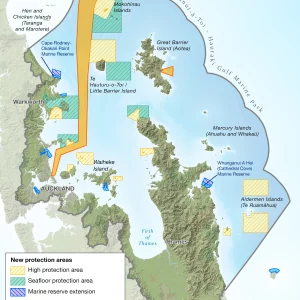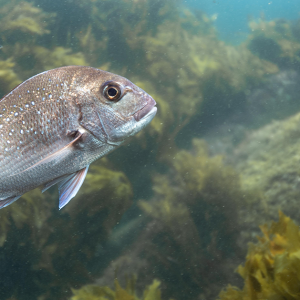Threats of compensation claims over the years have heavily influenced Ministerial decisions, even when the need for a catch reduction was obvious. Now we have a litany of fish stocks with uncatchable Total Allowable Commercial Catches (TACCs) and no prospects of precautionary management in sight. It is time we clarified the nature of quota so we can all get on with the business of restoring abundance in our inshore waters.
Contrary to popular belief quota owners do not own fish, they own shares in a Total Allowable Commercial Catch. So like any sharemarket investor, the buyer must accept that while they retain their shareholding the value of their shares changes over time.
In the case of the Quota Management System there are 628 fish stocks. There are 100 million shares for each fish stock. So the value of one quota share is equal to one hundred-millionth of the TACC for the stock.
Nathan Guy is the current Minister for Primary Industries. It is his job to decide the Total Allowable Catch (TAC) and TACC for a fish stock based on the best available information. The TACC applies to the fish stock until it is varied or the area that it applies to changes (a rare occurrence).

Quota shares generate annual catch entitlement (ACE). ACE has a one-year lifespan and can be traded several times during that period. Each fisherman must have ACE to cover his landed catch. He has until the 15th of the following month to source ACE if he catches a mix of species otherwise he pays a fine called deemed value.
Each year MPI’s chief executive calculates the amount of ACE that would be generated by the amount of quota in that stock. A formula applies, which is described in the Fisheries Act 1996 s66(2) as follows–
(a ÷ 100,000,000) x b = c
where –
a is the number of quota shares held by the quota owner
b is the Total Allowable Commercial Catch (expressed in kilos); and
c is the amount of annual catch entitlement that would be generated by the amount of quota held by each quota owner (expressed in kilos).
The Courts have confirmed the Minister’s ability to set the TACC at zero. If this occurs no ACE is generated but the investor retains their quota shares until they dispose of them.
It is convenient for proponents of compensation to describe their interests in fish stocks as a “property right” because it implies the property at stake is fish. It isn’t. The only property is the shares held in the TACC.
Catch entitlements – the amount of ACE – changes as the TACC is altered but the quota shareholding remains unaffected, therefore no liability for compensation arises for the Crown (and ultimately us the taxpayer).
This parliamentary speech from 1990 summarises it nicely –
“Under the proposal we have moved to proportionate quotas: the total allowable catch is set and the individual holders of those transferable quotas have their quota varied according to the proportion they hold. No compensation is involved, and, equally, people do not have to purchase any increase.”
During the Supreme Court kahawai hearing the Chief Justice queried whether the matter of compensation was being successfully employed ‘interorum’, which is a legal threat usually given in hope of compelling someone to act. The Solicitor General replied, “I wont say yes and I wont say no”.
Given Parliament’s clear statement and the structure of allocation described earlier it is indefensible, and goes against all principles, that increases in ACE ought to be free, but reductions need to be compensated. So, until the Courts or Parliament decide otherwise TACC reductions for any purpose, fisheries or conservation, do not reduce the “property” of quota shareholders, it simply alters the amount of available ACE.





